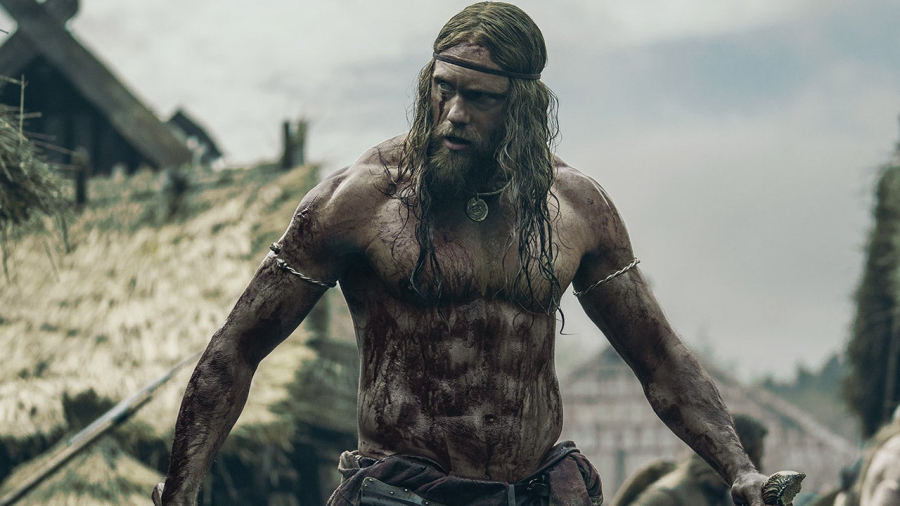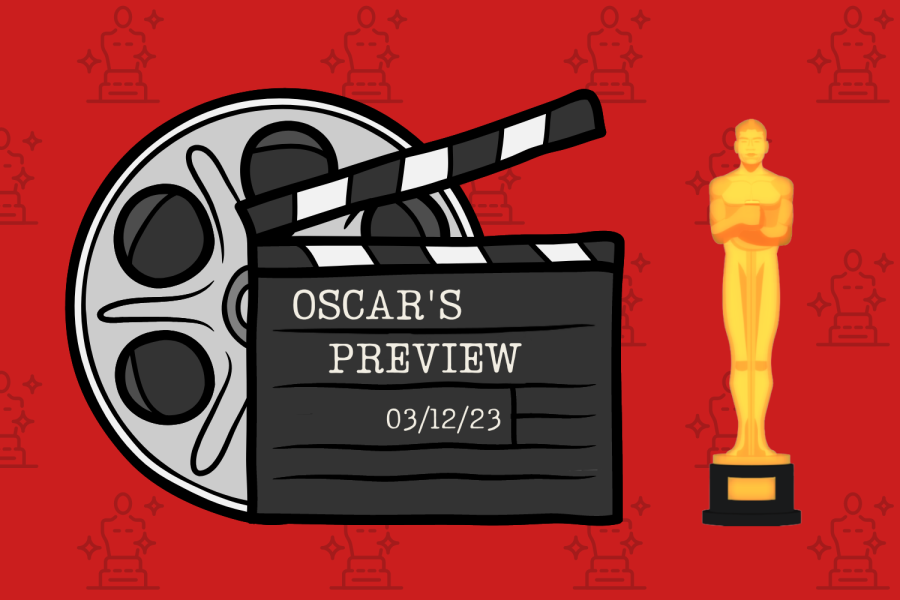Bloodshed. Fate. Prophecy. Revenge. Love. Freedom. These are just some of the themes of the Shakespearean Viking epic of Robert Eggers’ “The Northman.” The director of the weird and wonderful “The VVitch” and the even weirder and more wonderful “The Lighthouse,” Eggers is back with almost tenfold the budget and tenfold the ambition—numbers evident from the visual and emotional spectacle the Hamlet-inspired film provides.
“The Northman” follows Prince Amleth (Alexander Skarsgård), whose father (Ethan Hawke), a Viking king (a ViKing, if you will) is murdered by his uncle, Fjölnir (Claes Bang). Fjölnir proceeds to kidnap Amleth’s mother (Nicole Kidman) and forces Amleth to flee, starting the young prince’s journey of revenge. His motto is simple, as seen on the back of the T-shirts handed out at the early screening: I will avenge you, father; I will save you, mother; I will kill you, Fjölnir.
The movie is two hours and twenty minutes of pure animalistic emotion. Eggers manages to create an atmosphere of the past that is so foreign that the characters feel inhumane: they chant and howl, wolf-like, around a fire pit; they ritually crawl on all fours as the prince is deemed fit to be his father’s successor. A seer awaits in an Icelandic cave, skull of a dead jester in hand, letting the deceased speak through him. It is otherworldly and intense, with no punches pulled.
The action sequences match the intensity of the characters and themes, perhaps even surpassing it. Amleth, veered off course from his plan of revenge but still filled with endless anger, is brutal and void of any compassion to those who cross his path. He catches a spear thrown at him, then delivers death back to its sender. He creates symbols out of the dismembered limbs of his enemies. Everything is impressively savage.
Skarsgård, one of the many brilliant actors in his family (his brother: Pennywise; father: fugly guy from “Dune”), delivers exactly what the movie requires of him. He is constantly tense, ready to pounce on anyone who does him wrong. Even his walk, reminiscent of a predator on the hunt, looks like he has a vendetta against the air in front of him and the dirt below. The fact that the 6 ‘4” Swedish hunk went on an insane workout regime to become the embodiment of peak male performance probably helped him look gloriously frightening—he was yoked, as if his normal self wasn’t already enough to make me feel incredibly inferior.
The rest of the cast quite remarkably pull their weight as well, with A-list names such as Hawke, Kidman, Willem Dafoe and Anya Taylor-Joy performing the best Vikings they can. Everyone is impressively unrelatable and different, adding to the mythic atmosphere wherein you can tell something is not quite right. This creepy aura is maintained through special moments in these performances, such as when Taylor-Joy’s Olga enchants the wind to fill up the sails of a rowboat, or when Dafoe adorns a beastly grin, ready to test the young prince’s humanity.
Eggers plays with time and place to help create this weird, eerie feeling throughout the movie. Examples include showing a long, laborious fight scene, only to reveal it didn’t happen in the physical realm or having a creepy seeress (Björk) appear from thin air to remind Amleth of the path of revenge he has to embark upon. The music, the directing, the acting all come together to make you ask “Wtf?” (in a good way) in every other scene.
What I thought the movie needed, however, was better timing. I really appreciated, and expected, Eggers’ signature otherworldliness, which admittedly made the movie so special, but the moments it chose to be weird were … weird. At times, while still inherently foreign, the movie was more like a normal Viking saga than an Eggers film, while other times it goes full-out insane in a way you don’t usually expect from mainstream Hollywood. I was just not quite sold by the back-and-forth movement between these two styles, as the instant switches tended to pull me out of what could have been a more immersive movie.
Another thing that didn’t quite convince me was the dialogue. Continuing the attempt to feel foreign and different, the movie uses old, theatrical English as if it were a Shakespeare original. Unlike the other methods of making the movie feel alien, however, the way the characters talked did not add to the immersive experience, but actually took me out of it every now and then.
I will admit this is just me nitpicking, though. To compensate, I will now talk about my favorite aspect of the movie: the cinematography. The movie is, for a lack of a better word, beautiful. It is vibrant and striking during the day and the prettiest gray at night, lit up by the flames of the soldiers’ torches. The movie’s setting, as well as its filming location, is unsurprisingly the versatile Iceland, where the serene green meadows of Fjölnir’s farm contrast amazingly with the volcanic lava river where the final showdown takes place. Even the violence is shot in such a way that you can’t help but appreciate the beauty of the blood and death. It makes you wince and smile simultaneously.
“The Northman” is the most brutal and striking movie I’ve seen in a while. It is intense, beautiful and thrilling. It is very obvious that everyone gave it their all in a movie that is almost perfect. And well, “almost perfect” is nothing short of an extraordinary feat for Eggers and all involved. It is hard to make a Viking movie feel fresh and different from previous efforts, but they indubitably pulled it off.






